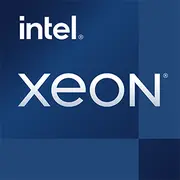Intel Xeon E3-1505M v5

Intel Xeon E3-1505M v5: A Processor for Mobile Workstation Professionals
April 2025
Introduction
Intel Xeon processors are traditionally associated with servers and workstations, but mobile versions like the Xeon E3-1505M v5 occupy a unique niche. Released in 2016 based on the Skylake architecture, this chip still finds its way into used and some new specialized laptops. In 2025, it remains relevant for specific tasks where stability, multi-threaded performance, and ECC memory support are important. Let’s explore who should consider devices with this CPU.
Architecture and Process Technology
Foundation: Skylake and 14 nm
The processor is built on the Skylake microarchitecture (6th generation Intel Core) with a 14 nm manufacturing process. It represents one of the last "classic" Intel architectures before shifting to hybrid solutions (like Alder Lake).
- Cores and Threads: 4 cores, 8 threads thanks to Hyper-Threading.
- Frequencies: Base frequency — 2.8 GHz, Turbo Boost — up to 3.7 GHz.
- Cache: 8 MB L3 cache, which enhances responsiveness in multitasking scenarios.
- iGPU: Integrated graphics are provided by Intel HD Graphics P530 with 24 Execution Units (EUs), supporting DirectX 12, OpenGL 4.4, and 4K output.
Architecture Features:
- Support for AVX2 instructions to accelerate calculations in rendering and encryption tasks.
- VT-x and VT-d virtualization technologies for working with virtual machines.
- ECC Memory: A key feature of Xeon processors is error-correcting memory crucial for engineering and scientific tasks.
Power Consumption and TDP
TDP 45 W places this processor in the "high-performance mobile" category. For comparison:
- U-series (15 W): Designed for ultrabooks but with lower performance.
- H-series (45 W and above): Targeted at gaming laptops and workstations.
What does this mean in practice?
- Laptops with the E3-1505M v5 require an efficient cooling system (two fans, copper pipes).
- In idle mode, power consumption drops to 5-10 W, but under load, temperatures can rise to 90–95°C.
- For comparison: modern Intel 13th generation processors (e.g., Core i7-13700H) at TDP 45 W offer up to 14 cores.
Performance in Real-World Tasks
Office Work and Multitasking
- Geekbench 6: 1161 (Single-Core), 3521 (Multi-Core). For 2025, these are modest scores (modern Core i5-1340P yields ~1800/8500), but sufficient for basic tasks.
- Examples:
- Concurrently working with 20+ tabs in Chrome, Excel spreadsheets, and Zoom — no lag.
- Converting PDF to Word takes 15–20 seconds (compared to 5–8 seconds with Ryzen 5 7640U).
Multimedia and Rendering
- HandBrake (encoding 1080p video in H.265): ~45 minutes for a 1-hour file (compared to 25 minutes with Apple M2).
- Adobe Photoshop: Filters and retouching work smoothly, but AI features (like Generative Fill) lag behind modern NPUs.
Gaming
- Intel HD Graphics P530: Limited capabilities.
- CS:GO (1080p, low settings) — 40–50 FPS.
- The Witcher 3 (720p, low) — 15–20 FPS.
- Modern AAA titles (Cyberpunk 2077, Starfield) — unplayable.
Turbo Boost: Under peak loads, the frequency rises to 3.7 GHz but doesn’t last long (10–15 seconds) due to overheating.
Usage Scenarios
This processor is suitable for:
1. Engineers and Designers: For CAD applications (AutoCAD, SolidWorks) with ECC memory support.
2. Data Analysts: Working with databases and virtualization.
3. Freelancers: Editing videos in Premiere Pro or DaVinci Resolve on a budget workstation.
Not suitable for:
- Gamers: Weak graphics and lack of discrete GPUs in most laptops with this CPU.
- Ultrabook Users: High power consumption reduces battery life.
Battery Life
- Operating Time: Laptops with E3-1505M v5 (e.g., Dell Precision 3510) come with batteries of 68–90 Wh. Under moderate load (office tasks) — 4–5 hours.
- Power-Saving Technologies:
- Intel SpeedStep: Dynamic frequency adjustment.
- C-States: Disabling unused cores.
- Driver Optimization: Effective management of iGPU.
Advice: To extend battery life, disable Turbo Boost in BIOS settings.
Comparison with Competitors
AMD Ryzen Pro 5 3600 (2020)
- 6 cores/12 threads, 7 nm, TDP 35 W.
- Better multi-threaded performance (Geekbench 6 Multi-Core ~5000), but lacks ECC memory in budget models.
Apple M1 (2020)
- 8 cores (4+4), 5 nm, TDP 20 W.
- Geekbench 6: ~2300 (Single), ~8500 (Multi).
- Advantage: Battery life up to 15 hours, but no support for Windows or specialized software.
Intel Core i7-6820HQ (2015)
- Comparable to Xeon E3-1505M v5 without ECC. Cheaper by 20–30%, but less reliable for critical tasks.
Pros and Cons
Strengths:
- Support for ECC memory.
- Stability under prolonged loads.
- Good multi-threaded performance for its class.
Weaknesses:
- Outdated architecture: Falls behind modern chips by 30–50% in Single-Core performance.
- High TDP: Noisy coolers, low battery life.
- No support for PCIe 4.0/Thunderbolt 4.
Laptop Selection Recommendations
- Device Type: Mobile workstation (Dell Precision, HP ZBook).
- What to Look For:
- Cooling: Check reviews for noise and temperature.
- RAM: At least 16 GB DDR4 with ECC.
- Storage: Must have NVMe SSD.
- Price: New devices with this CPU cost $1200–$1500 (e.g., Dell Precision 3560).
Important: In 2025, these laptops should be purchased only for specific tasks. For most users, it’s more advantageous to take a model with Ryzen 5 7640U or Core i5-1340P.
Final Verdict
The Intel Xeon E3-1505M v5 is a specialized processor for:
- Engineers who require reliability and ECC memory.
- Corporate users upgrading their workstation fleet on a limited budget.
Key benefits: Reliability, support for professional features, stable performance under load. However, for everyday tasks, gaming, or creative work, it’s better to choose modern alternatives.
If you're looking for a laptop for CAD, virtualization, or data analysis and can tolerate weight and noise — the Xeon E3-1505M v5 can still serve you well. But remember: technology doesn’t stand still, and even budget new processors often outperform it in all parameters.
Basic
CPU Specifications
Memory Specifications
GPU Specifications
Miscellaneous
Benchmarks
Compared to Other CPU
Share in social media
Or Link To Us
<a href="https://cputronic.com/en/cpu/intel-xeon-e3-1505m-v5" target="_blank">Intel Xeon E3-1505M v5</a>